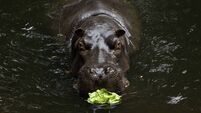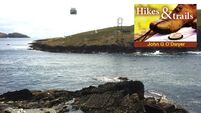Urgent need to get a grip on toxic habit of using poisons
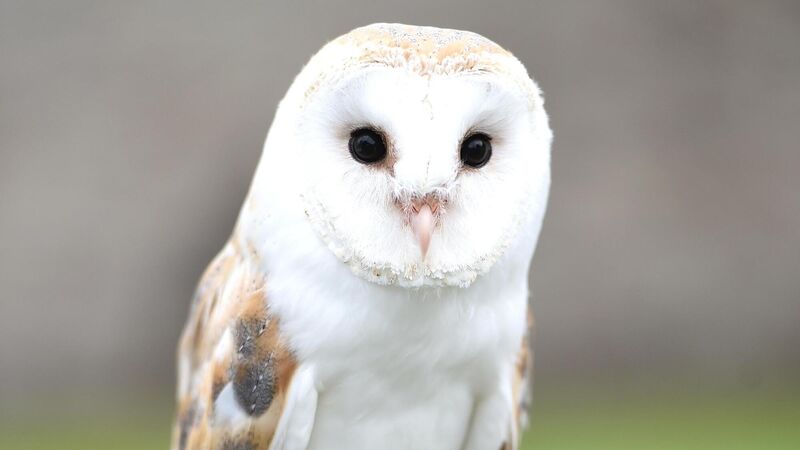
Barn Owls: when the baby owlets hatch out, featherless and vulnerable, the parents will need to catch up to 25 rodents each night to keep the brood fed. Picture: Larry Cummins
In early spring, Barn Owls are already planning for the nesting season soon to come. Prospecting pairs begin to roost together at the nest site, flying out together at dusk, swooping in circles over the treetops, synchronising their movement in a courting dance. During these display flights, male owls call out and females respond, screeches that carry out over the countryside on spring evenings. The screeching sound is echoed in their Irish name: ‘Scréachóg Reilige’ — the graveyard screecher.
Once paired up, Barn Owls are usually monogamous and mate for life. On Valentine’s Day, a friend showed me footage from her owl nesting box, which has been in place on her farm in Kilkenny for several years. She has a camera installed, and was excited to show me the resident pair caught in the act, mating already, a feat of outstretched wings and precarious balance. Once mated, the pair crouched side by side-by-side, but set apart at the maximum distance the next box would allow. They looked almost awkward in the aftermath.
In a few weeks’ time the female will lay between 4 and 10 eggs, which will need to be incubated for about a month. When the baby owlets hatch out, featherless and vulnerable, the parents will need to catch up to 25 rodents each night to keep the brood fed. This is the main reason why Barn owls have always been so popular with humans, in farmyards in particular. These beautiful animals help put limits on the number of mice and rats around the farm. Keeping the grain store free from rodents is an especially valuable service, provided for free by Barn owls. Many old barns had Barn owl ‘windows’ specially built into the gable end, a way of recruiting barn owls to nest there.
But now, rather than depending on healthy populations of owls to keep rodents in check, we have come to depend instead on rat poison. The rising use of chemical rodenticides (rat poisons) is one of the main causes of decline in the population of Barn Owls here. These poisons are designed to act slowly upon the rat or mouse that eats them, they do not die immediately. So the owls, who eat a lot of rats and mice, are slowly poisoned too, as the deadly chemicals accumulate in both the adults and their brood of juvenile owlets. This is a widespread problem — more than 88% of Irish Barn Owls have been found to contain rodenticides in their system. In addition, the baiting stations used to lay rat poison are also accessible to wood mice, bank voles, pygmy shrew and all the wild predators who survive on these small mammals.
Kilkenny farmer Nicky Murphy has a family of Barn Owls living in a nest box on his farm. For years he used buckets of rat poison, but has now stopped using it altogether because of the owls. While he was initially fearful of the change, he now says he has fewer rats than before, suggesting that the owls do a better job of controlling rodents than the rat poison.
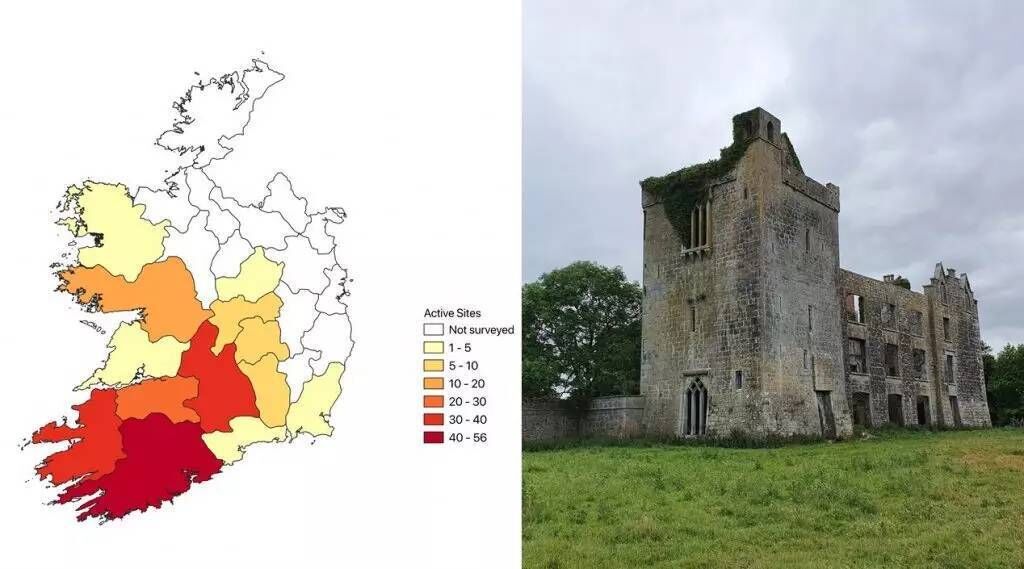
It is changes in attitude and action such as these that are needed to help Barn Owl survive across Irish landscapes. Widespread declines in both their population and their range mean they are now a Red-listed Bird of Conservation Concern in Ireland. These stunningly beautiful, graceful, and wise creatures have not been able to adapt to the combined pressures of habitat loss due to the intensification of farming; the high levels of secondary poisoning from rodenticides; and a lack of suitable nest sites.
Barn Owl nest boxes are one measure, which John Lusby, raptor officer with BirdWatch Ireland, describes as being a huge success in recent years. There are now more than 150 pairs of barn owls using nest boxes throughout Ireland, and this number continues to increase each year. Typically, Barn owls make their nests in tree holes, sheltered rocky ledges in cliffs or quarries, in caves, and in human structures such as the lofts of barns, old stone farm buildings, in church steeples, and in cavities in old abandoned stone ruins. But as nesting opportunities in the landscape have decreased, nest boxes help to boost their breeding success.
With a growing awareness of Barn Owls and a payment to help encourage nest boxes on farms, it is important to ensure that nest boxes are actually helpful for the owls. Installing a nest box for owls is an option under the ACRES (Agri-Climate Rural Environment Scheme) farm support scheme, but there is much to consider. For a start, there is no point putting up a nest box on a farm too close to a major road, as Barn Owls are particularly susceptible to collisions on fast roads. Similarly, it would be cruel to entice owls to nest where their young will be exposed to an elevated risk of poisoning by eating poisoned rats and mice, so eliminating or at least tightly controlling the use of rodenticides on farms where nest boxes are installed is also necessary. For anyone thinking about putting up a barn owl nest box, BirdWatch Ireland has produced guidance documents and videos in collaboration with The Department of Agriculture, Food and the Marine, containing lots of practical advice on how to choose a good site for a Barn Owl nest box.
John Lusby and other experts are keen to emphasise however that while putting up nest boxes is great, the most important measures for Barn owls are creating and enhancing foraging habitat, and reducing and removing use of rodenticides. In some pockets of the country, Barn Owl populations are beginning to recover, making them a welcome sight as dusk descends. Watching a wild Barn owl at close quarters was one of the highlights of last summer for me. Swooping low, their ghostly white underside stood out starkly in the darkness while its enormous wings beat in gentle silence.
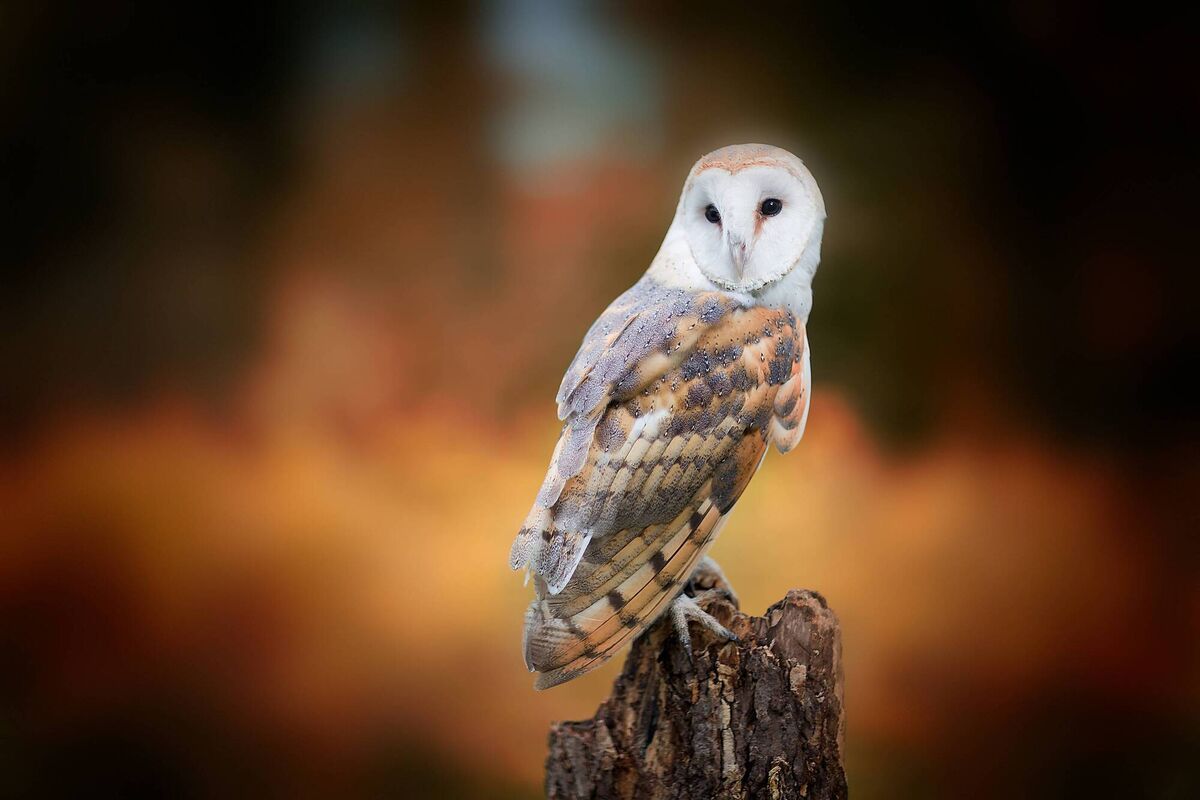
It is up to us all to make sure Owls have a future here, and it's not just farmers who can help. Last summer I was shocked to find rodent bait station traps installed on Inis Cealtra, Holy Island, in Lough Derg in County Clare. This OPW-managed site has a range of ideal habitats for foraging owls and other raptors, yet the area was fully equipped with rodent poisoning stations. The widespread use of rodenticides is a toxic habit we, as a society, urgently need to get a grip on.
BirdWatch Ireland says that citizen science is an important element of its Barn Owl survey and monitoring.
"Everybody remembers an encounter with a Barn Owl (whether alive or dead), and many people have gone to the effort to build and install nest boxes for Barn Owls — all this information is incredibly valuable and helps us to direct survey efforts, ensure that nest sites are protected, understand causes of mortality and informs conservation efforts (such as the provision of nest boxes)."
"Please report information on Barn Owls using the relevant forms here for reporting potential Barn Owl nest sites, Barn Owl sightings, dead Barn Owl and also if you have or know of a nest box installed for Barn Owls or if you have a suitable location for a Barn Owl nest box. The Barn Owl citizen science survey is supported by the Small Recorders Grant of the National Parks and Wildlife Service."




